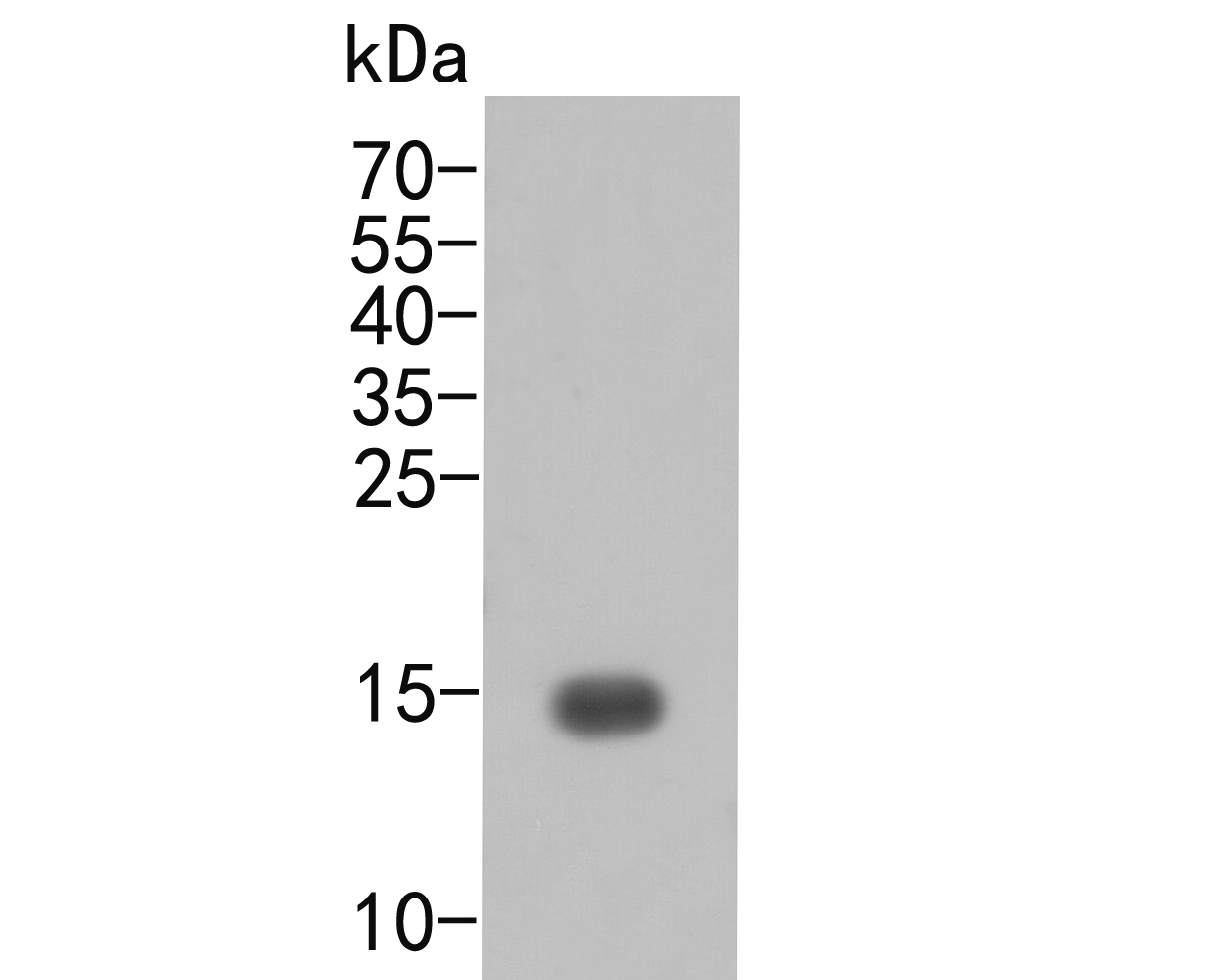-
Product Name
Anti-Tnf antibody
- Documents
-
Description
Rabbit polyclonal antibody to Tnf
-
Tested applications
WB, ELISA
-
Species reactivity
Mouse
-
Alternative names
DI antibody; Tn antibody; DIF antibody; TNF- antibody; Tnfa antibody; Tnfs antibody; TNF-a antibody; TNFSF2 antibody; Tnlg1f antibody; Tnfsf1a antibody; TNFalpha antibody; TNF-alpha antibody
-
Isotype
Rabbit IgG
-
Preparation
This antigen of this antibody was synthetic peptide within human tnf alpha aa 40-80 and aa 170-210.
-
Clonality
Polyclonal
-
Formulation
Liquid, 1*PBS (pH7.4), 0.2% BSA, 40% Glycerol. Preservative: 0.05% Sodium Azide.
-
Storage instructions
Store at +4℃ after thawing. Aliquot store at -20℃ or -80℃. Avoid repeated freeze / thaw cycles.
-
Applications
WB: 1:500-1:1,000
ELISA: 1:10,000-20,000
-
Validations

Fig1:; Western Blot analysis of recombinant murine TNF-alpha using rabbit TNF alpha antibody.; Western blot analysis of TNF alpha on recombinant protein lysate. Proteins were transferred to a PVDF membrane and blocked with 5% BSA in PBS for 1 hour at room temperature. The primary antibody ( 1/1000) was used in 5% BSA at room temperature for 2 hours. Goat Anti-Rabbit IgG - HRP Secondary Antibody (HA1001) at 1:5,000 dilution was used for 1 hour at room temperature.
- Background
-
References
- Aggarwal, B.B. (2003) Nat Rev Immunol 3, 745-56.
- Hehlgans, T. and Pfeffer, K. (2005) Immunology 115, 1-20.
- Lin, P.L. et al. (2007) J Investig Dermatol Symp Proc 12, 22-5.
- Brennan, F.M. and McInnes, I.B. (2008) J Clin Invest 118, 3537-45.
Related Products / Services
Please note: All products are "FOR RESEARCH USE ONLY AND ARE NOT INTENDED FOR DIAGNOSTIC OR THERAPEUTIC USE"
